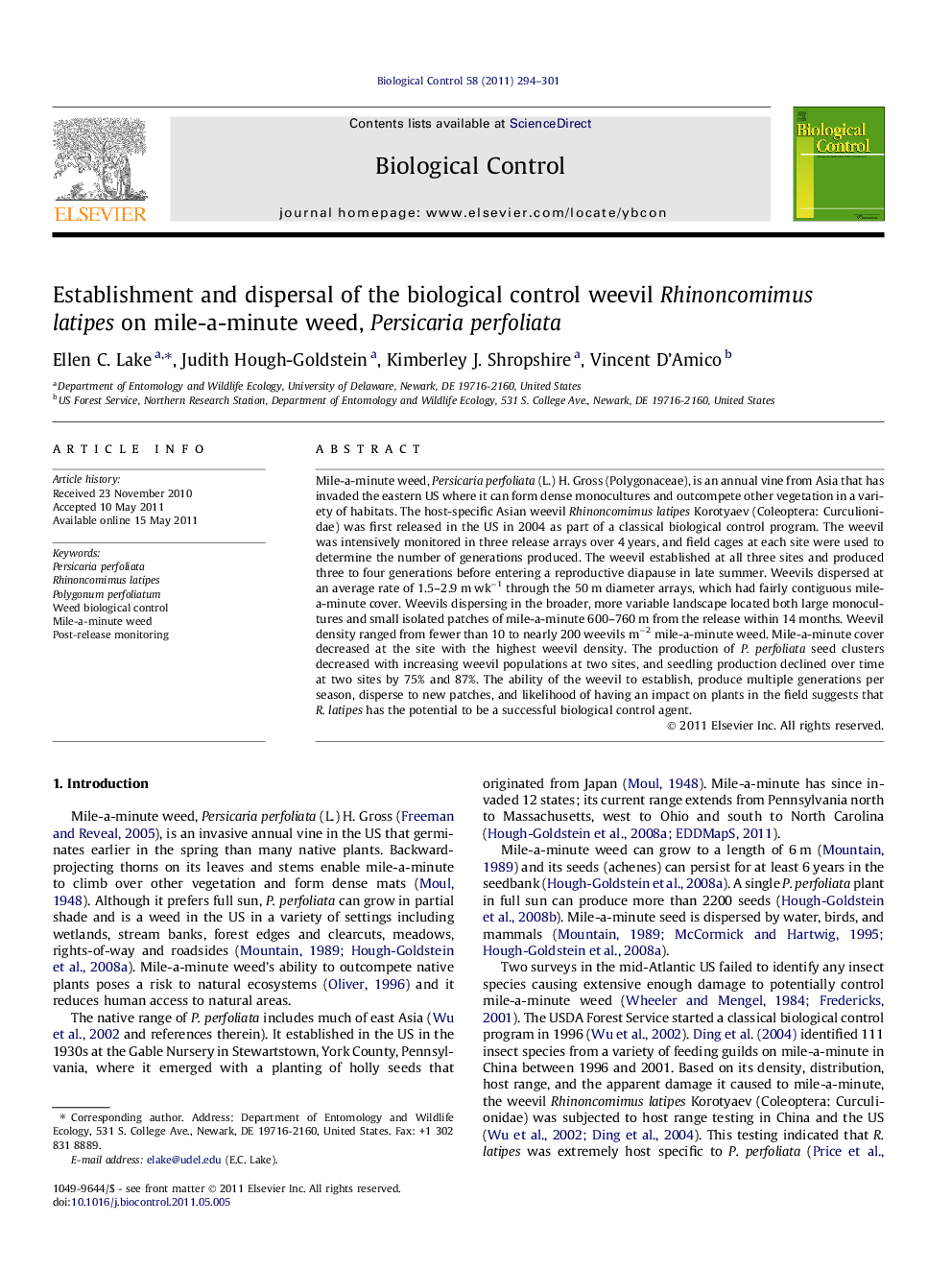| Article ID | Journal | Published Year | Pages | File Type |
|---|---|---|---|---|
| 4504262 | Biological Control | 2011 | 8 Pages |
Mile-a-minute weed, Persicaria perfoliata (L.) H. Gross (Polygonaceae), is an annual vine from Asia that has invaded the eastern US where it can form dense monocultures and outcompete other vegetation in a variety of habitats. The host-specific Asian weevil Rhinoncomimus latipes Korotyaev (Coleoptera: Curculionidae) was first released in the US in 2004 as part of a classical biological control program. The weevil was intensively monitored in three release arrays over 4 years, and field cages at each site were used to determine the number of generations produced. The weevil established at all three sites and produced three to four generations before entering a reproductive diapause in late summer. Weevils dispersed at an average rate of 1.5–2.9 m wk−1 through the 50 m diameter arrays, which had fairly contiguous mile-a-minute cover. Weevils dispersing in the broader, more variable landscape located both large monocultures and small isolated patches of mile-a-minute 600–760 m from the release within 14 months. Weevil density ranged from fewer than 10 to nearly 200 weevils m−2 mile-a-minute weed. Mile-a-minute cover decreased at the site with the highest weevil density. The production of P. perfoliata seed clusters decreased with increasing weevil populations at two sites, and seedling production declined over time at two sites by 75% and 87%. The ability of the weevil to establish, produce multiple generations per season, disperse to new patches, and likelihood of having an impact on plants in the field suggests that R. latipes has the potential to be a successful biological control agent.
Graphical abstractFigure optionsDownload full-size imageDownload as PowerPoint slideHighlights► Biocontrol weevils established at all three study sites. ► The weevils produce at least three or four overlapping generations per season. ► Biocontrol weevils dispersed 1.5–2.9 m wk−1. ► Mile-a-minute seed production decreased as weevil populations increased at two sites.
